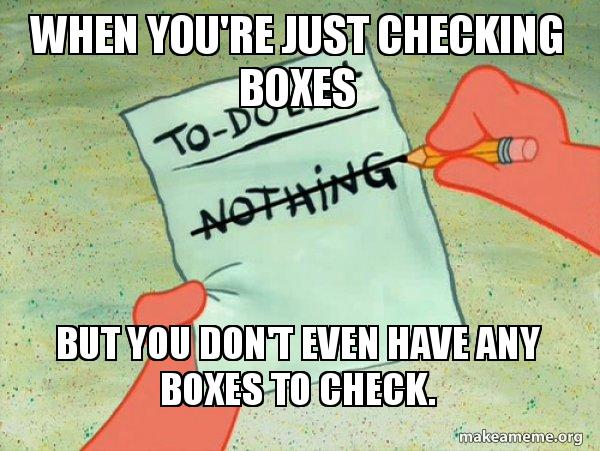Are You Building Real Change or Just Checking Boxes?
Are you making massive shifts in your business, or are you simply checking boxes on an agenda?
Every engagement starts with a plan—a structured framework designed to achieve specific goals. But here’s the problem: when you apply the exact same plan to every situation, you get the same predictable, common results. And as the saying goes, common thinking equals common results.
When I look at the programs and coaches we’re often compared to—or commoditized against—the surface similarities are there. The Day 1 plan is typically cookie-cutter, regardless of the company’s industry. Plumbing, restaurants, healthcare—same agenda. It looks like this:
-
- Check-In
- Accountability/Organizational Chart
- Priorities/Rocks
- Meeting Rhythms
- Scorecard/Metrics
- Plan Review
- Next Steps
- Conclude
It’s precise. It’s timed. And for some businesses, it works well enough. But what happens when “well enough” isn’t good enough? What happens when the approach needs to be different to unlock exceptional growth?
Let me show you what I mean!
A Different Kind of Day 1
Yesterday, I kicked off with a new client—a fast-growing office of forward-thinking doctors. These aren’t your typical “turn-and-burn” medical providers. They’re trailblazers who care just as much about transforming lives as they do about building a thriving business. For them, the common Day 1 agenda would have fallen flat.
Yes, there were some similarities to the standard plan, but there were also critical differences. Here’s what we did—and why it mattered.
Breaking the Ice (Check-In)
Of course, we kicked off with a check-in. Wins were shared, frustrations surfaced, and the tone was set. This step might be standard, but it’s non-negotiable. You have to break the ice and create the space for open, honest dialogue.
Why Are We Here?
Here’s where we veered from the script. Instead of diving into metrics or organizational charts, we worked through the most important question of all:
Why are we here?
This wasn’t about lofty mission statements. It was about uncovering the truth—why each person in the room chose to be part of this company. The energy became electric as we grounded ourselves in a shared sense of purpose. When a team connects to why they’re doing the work, they’re unstoppable.
Transparency in Financials
Next, the financials. Transparency was key here—how can a team play the game if they don’t know the score? We dug into what’s working, what’s not, and what’s needed to set realistic priorities. Without this clarity, everything else is just guesswork.
The 7 Disciplines
Before jumping into tactical planning, we addressed the foundational principles—the 7 Disciplines needed to scale a business. As Stephen Covey famously said:
“Principles are the territory. Values are maps. When we value correct principles, we have truth—a knowledge of things as they are.”
Skipping this step would have been like building a house without a foundation. We had to get the principles right first.
Structuring for Success (FACe & Job Scorecards)
From there, we worked on the Function Accountability Chart (FACe)—not just defining roles, but asking deeper questions:
-
- Do we have the right structure?
- Are the right people in the right seats?
- How do we measure success for each function?
This naturally led to Job Scorecards. But not the kind with a bland list of metrics. We built scorecards that covered:
-
- Purpose
- Accountabilities (behaviors)
- Competencies (skills)
- Metrics
- Core Values
This holistic approach ensures we measure not just performance but also cultural alignment and behavior. Without this, how can you truly coach someone to become their best?
Building the Plan (But Not the Way You Think)
Now you’re wondering, When does the planning happen?
We started working the plan, but not with overly complicated rocks or priorities. First, we focused on the numbers—the financial targets for the next 90 days to 3 years. Why? Because if you’re not clear on the numbers, you’ll waste time building tactical plans that don’t move the needle.
Once we nailed the targets, we doubled back—not to the team structure, but to the organization itself. We built the Key Function Flow Map (KFFM), a visual tool that maps critical processes and shows how they deliver value. Without this clarity, even the best-sounding priorities end up doing nothing.
Conclusion: Principle-First Planning
We wrapped the day with meeting rhythms and set the stage for a deeper dive into actionable planning in the weeks ahead. But here’s the kicker: this principle-first approach ensures we build a plan that actually works.
Diving into planning on Day 1 might feel productive, but it often masks the real issues. By focusing on principles first, we uncovered critical gaps, including:
- A misaligned compensation plan
- Marketing issues
- Unrealistic financial targets
- Broken service delivery processes
- Product lines losing money
These aren’t surface-level problems. They’re the kind of challenges that keep businesses stuck—and they can’t be solved by simply “checking boxes.”
As You Plan for 2025…
Ask yourself:
-
- Are you taking a principles-first approach to uncover the real issues in your business?
- Or are you following a scripted agenda that feels productive but ultimately keeps you stuck?
Your choice will determine whether 2025 is the year of massive shifts—or just another year of checking boxes.
Make it count.
MORE TO EXPLORE
Strategy is an Infinite Loop!
In the early 1960s, a town clogged with traffic and pedestrians gave birth to what we now know as Black Friday. Fast forward to 2005, the National Retail Federation launched Cyber Monday to boost struggling online retail stores. Now, we\'ve evolved into Black Friday week, and it\'s not just about…
I Don’t Have Anything to Sell You!
In the early 1960s, a town clogged with traffic and pedestrians gave birth to what we now know as Black Friday. Fast forward to 2005, the National Retail Federation launched Cyber Monday to boost struggling online retail stores. Now, we\'ve evolved into Black Friday week, and it\'s not just about…
Why I Suck at Selling!
If We Only Look at Conversion % Let me be clear: I suck at selling if we’re measuring by conversion rates alone. Why? Because I refuse to rely on chicanery, trickery, or BS sales tactics. I operate differently—with my fundamental concerns and those of my clients at the forefront. No fluff.…




